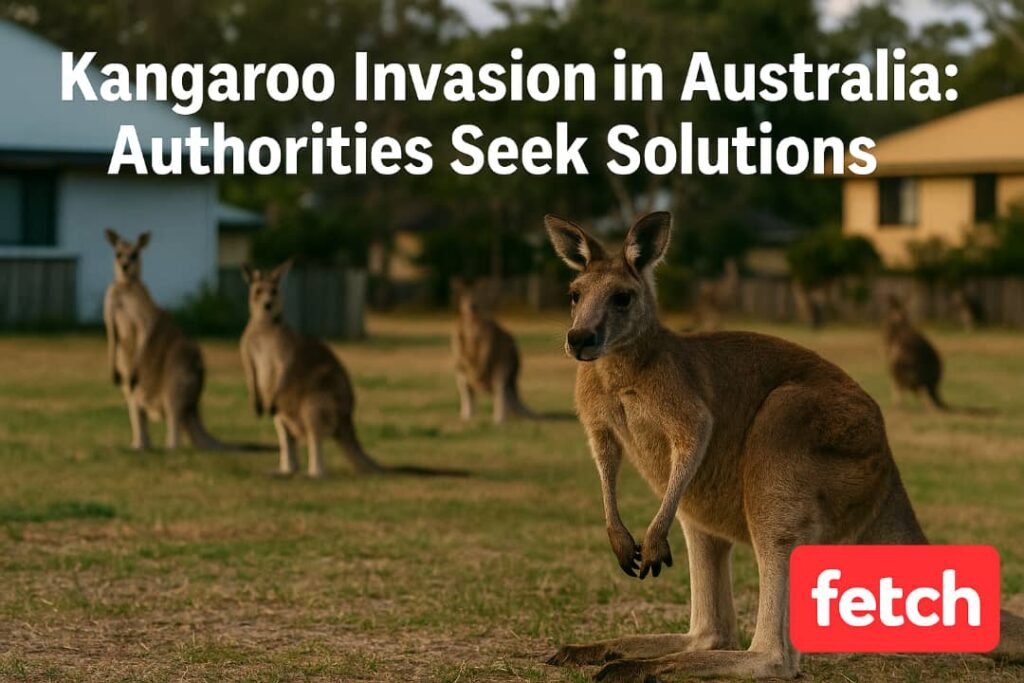
When you think of Australia, kangaroos probably spring to mind as adorable icons of the outback. But for some small Aussie towns, these marsupials have become a daily menace, leaving locals scratching their heads about what to do next. Here’s a closer look at how kangaroos are turning life upside down for residents,band why finding a fix is proving so tricky.
Kangaroos Are Now Everywhere

It’s not just a few stray kangaroos hopping down the road, some towns are seeing mobs of up to 80 kangaroos at a time, right in the heart of their communities. In places like Maaroom, Queensland, these animals are no longer shy visitors but constant presences, weaving through caravan parks, lounging on lawns, and blocking driveways. Residents are finding it hard to enjoy simple pleasures like afternoon walks or even a bit of fishing, as kangaroos can appear suddenly and unpredictably, making people wary of venturing outside. Source: nationalgeographic.com
Aggressive Encounters Are on the Rise

While kangaroos are usually known for their gentle grazing, there’s been a noticeable uptick in aggressive behavior. In the past year alone, several people have been attacked, including an elderly woman who suffered a broken femur, bite marks, and scratches. Most of these incidents involve female kangaroos protecting their joeys, but the sheer number of attacks has left locals anxious. Many now carry sticks for self-defense, and some have even resorted to makeshift weapons just to feel safe in their own neighborhoods. Source: abc.net.au
Food Shortages and Climate Change Are Driving the Problem

Experts point to a mix of climate factors behind the kangaroo invasion. Unusual weather patterns, like heavy rains followed by drought, have created a feast or famine cycle. When food is scarce in the bush, kangaroos head straight for the green lawns and gardens of residential areas, which act like a buffet. In Canberra, for instance, food shortages caused by a harsh winter pushed thousands of kangaroos into the city, leading to more frequent and sometimes dangerous encounters with people and vehicles. Source: news.sky.com
Feeding Kangaroos Makes Things Worse

It’s tempting to toss a carrot or some fruit to a hungry kangaroo, but experts warn this only encourages them to approach humans more boldly. In some tourist hotspots, kangaroos have become so accustomed to being fed that they now demand food, sometimes turning aggressive when it’s not offered. This “training” by well-meaning people has led to daily incidents of kicking and scratching, and it’s making the animals more likely to linger in populated areas, searching for their next treat. Source: bbc.com
No Easy Solution in Sight

Despite the mounting problems, there’s no clear answer for towns under siege by kangaroos. Culling is controversial and often met with strong opposition, while relocation is expensive and not always effective. Wildlife agencies urge residents not to feed the animals and to secure gardens, but these measures only go so far. For now, locals are left to adapt, arming themselves with sticks and keeping a wary eye out for unexpected visitors. It’s a uniquely Australian dilemma, one that highlights how closely humans and wildlife are intertwined, and how tough it can be to restore balance when nature comes knocking. Source: bbc.com
If you live in Australia and you’re experiencing what it’s like to share your street with a mob of kangaroos, share with us in the comments about your wildlife encounters and how communities are coping.


